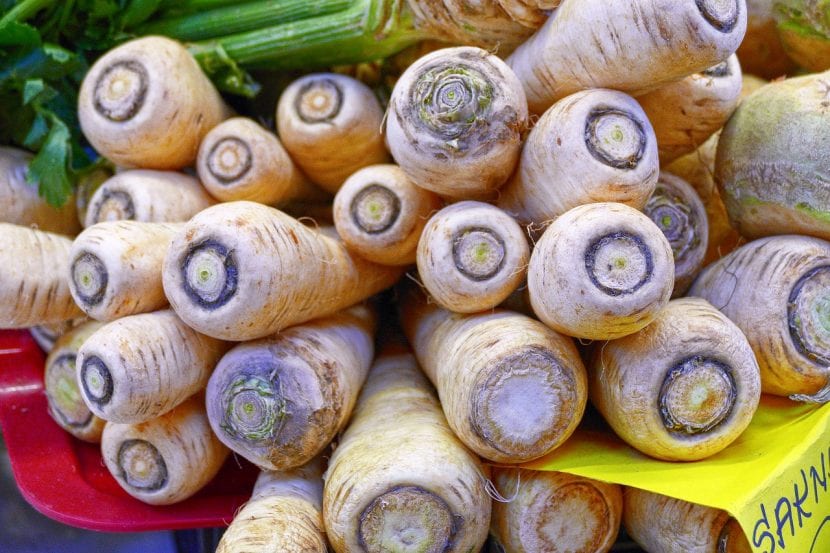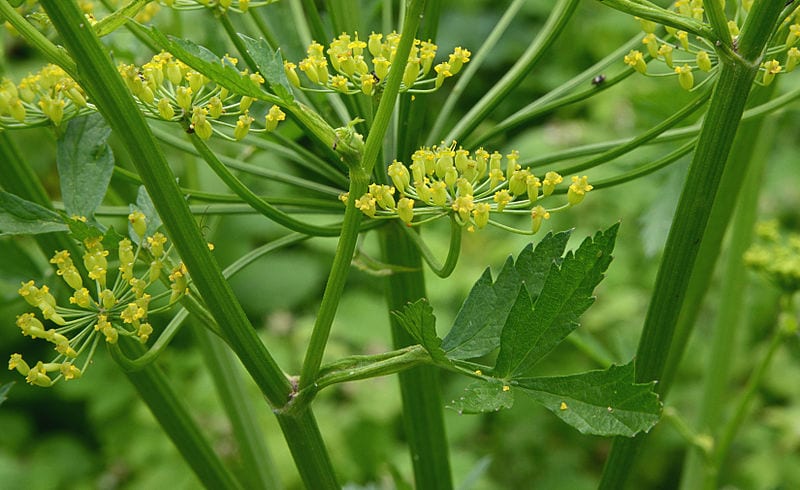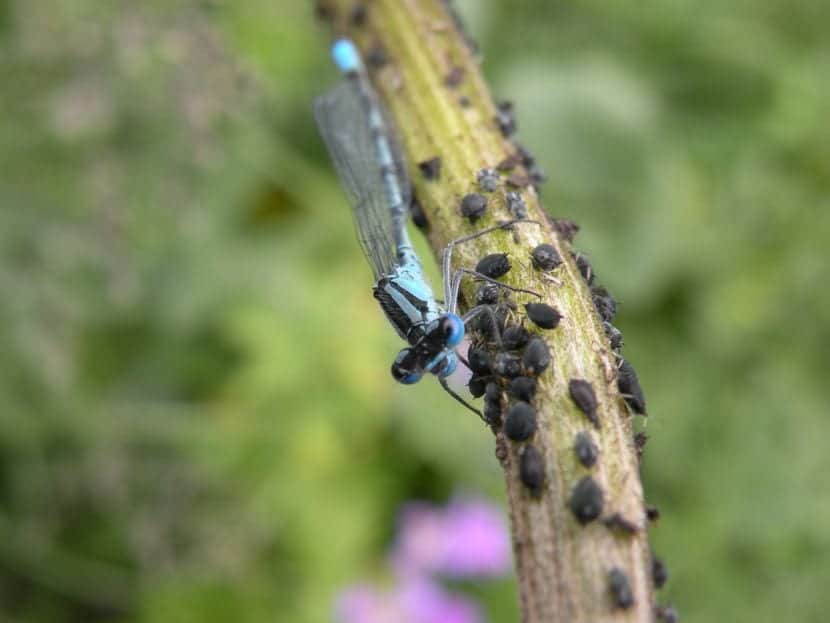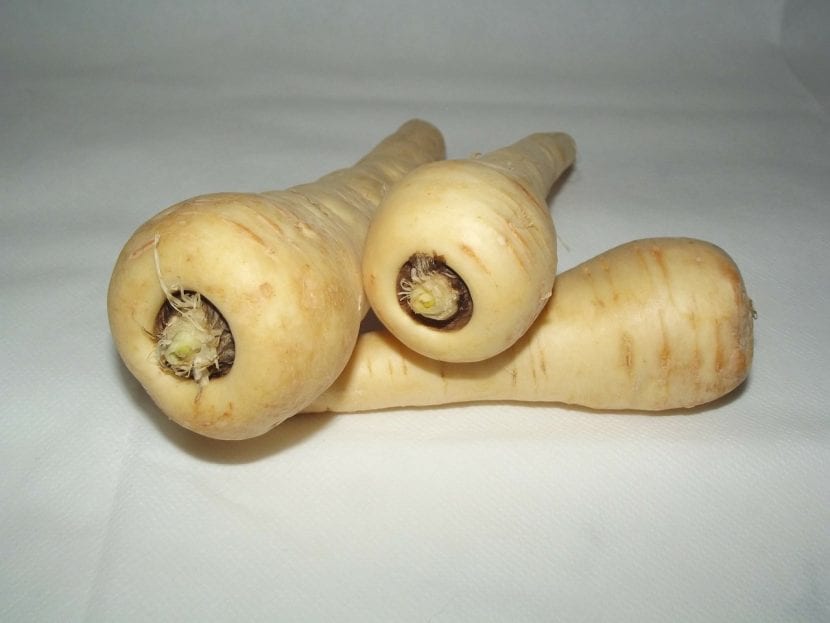
Fancy growing parsnip? It is used in the same way as carrots, which means that you can cook or stew it. In addition, its cultivation is not very complicated, since you only need a little land and water.
So write down our tips to be able to taste the flavor of the parsnip.
Origin and characteristics

Image - Wikimedia / Rasbak
Our protagonist, whose scientific name is Sativa parsnip, is a biennial herb (its life cycle lasts 2 years) native to the temperate zones of Eurasia which is known as parsnip, cherevía, parsnip, white carrot or elaphobosco. It develops a very fine and branched stem up to 80cm high from which large, petiolate, odd-pinnate leaves sprout, green in color. During the second year, the flowers appear in the shape of a greenish-white umbel that, once pollinated, will give seeds.
The most interesting part, however, is the taproot, which is the thickest of all. This is fleshy, of a creamy ivory color. Other finer roots emerge from it.
There are three cultivars:
- Early Round Panais
- Medium Long Panais
- Long of Guernsey
Cultivation and care
If you want to grow parsnip, we recommend following these tips:
Location
It has to be placed outside, full sun.
Land
The soil must be rich in organic matter, with good drainage.
Irrigation
Frequent. It is necessary to avoid that the earth remains dry too long. The ideal is to water every 2 days in summer and every 4-5 days the rest of the year.
Subscriber
Organic fertilizers should be used, such as guano, chicken manure (if it is fresh it must be left to dry in the sun for at least a week), or add tea bags, wood ash, vegetables that can no longer be eaten, egg shells and / or banana.
Multiplication
Parsnip multiplies by seed in early spring. The procedure is as follows:
- First, a seedling tray is filled (like this one from here) with universal growing medium (you can get it here).
- Second, it waters well.
- Third, one or two seeds are placed in each socket and covered with a thin layer of substrate.
- Fourth, it is watered again, this time with a sprayer.
Thus, keeping the substrate always moist, they will germinate for one or two weeks. When the roots come out of the drainage holes, it will be time to plant them in the garden.
Plantation
They are planted in rows, at a distance of about 20 cm between them and between rows.
Pests

- Aphid: they are insects of about 0,5 cm that can be yellow, brown or green that feed on the cells of the leaves. They are controlled with yellow sticky traps (like these in here).
- Gray worm: it is a larva of about 4cm long that attack the neck of the plants and their roots. They are removed with chlorpyrifos.
- Carrot fly: it is a fly that measures about 4mm whose larvae attack the roots. They are controlled with coffee grounds, which have to be put around the crops.
Management
- Powdery mildew: it is a fungus that forms a network of whitish and powdery filaments on the leaves. It is fought with fungicide, or with sulfur.
- Mildew: it is a fungus that attacks the leaves, stems and fruits, where a greyish-whitish powder will appear. It is fought with fungicide, or with sulfur.
Harvest
Parsnip will be ready for harvest from autumn. It is not necessary to cut them all at once, but they can be extracted as they are needed.
What is?

Culinary uses
The taproot has culinary uses. In fact, and as we mentioned at the beginning, can be used as an ingredient in stews, soups and stews. Its nutritional value per 100 grams is as follows:
- Energy: 75 kcal
- Carbohydrates: 18g, of which 4,8 are sugars and 4,9 are dietary fiber
- Fat: 0,2g
- Proteins: 1,2g
- Water: 79,53g
- Thiamine (vitamin B1): 0,09mg
- Riboflavin (vitamin B2): 0,05mg
- Niacin (vitamin B3): 0,7mg
- Pantoenic acid (vitamin B5): 0,6mg
- Vitamin B6: 0,09mg
- Vitamin C: 17mg
- Vitamin E: 1,49mg
- Vitamin K: 22,5 μg
- Calcium: 36mg
- Iron: 0,59mg
- Magnesium: 29mg
- Manganese: 0,56mg
- Phosphorus: 71mg
- Potassium: 375mg
- Sodium: 10mg
- Zinc: 0,59mg
Medical uses
But in addition to being very useful in the kitchen, it can also help us to have better health since used to prevent fluid retention, decrease fever, or relieve symptoms of arthritis or gout.
It must also be said that it is highly indicated to calm stomach pain, gas and other gastrointestinal disorders such as constipation. Also, as it contains vitamin C, it is one of the best allies our immune system can have.
In the event that we want to lose weight, or simply keep in shape, this vegetable will give us a lot of energy and will satisfy us.
And with this we end the special about this amazing plant. What do you think? Was it interesting for you?